Delayed Sub-axial Fracture Dislocation Surgical Management: Technical Notes and Review of the Literature
- PMID: 37366433
- PMCID: PMC10290902
- DOI: 10.7759/cureus.39539
Delayed Sub-axial Fracture Dislocation Surgical Management: Technical Notes and Review of the Literature
Abstract
The surgical treatment of delayed, unstable sub-axial cervical spine injuries is challenging. Multiple treatment regimens have been described in the literature, although there is no consensus regarding the best treatment approach. This report presents a 35-year-old obese woman who experienced a delayed sub-axial fracture-dislocation following a motor vehicle accident (MVA) and was successfully managed after three weeks via pre-operative traction followed by a novel single-surgery, single-approach technique with pedicle screws and tension-band wiring as a reduction method. A 35-year-old obese woman with a body mass index (BMI) of 30.1 sustained a frontal impact MVA and suffered from complete quadriplegia below C5 (American Spinal Cord Association Injury A) three weeks prior to presentation. She was intubated and presented with a Glasgow Coma Scale score of 11/15. Trauma computed tomography (CT) showed an isolated spine injury. Moreover, whole-spine CT showed an isolated cervical spine injury involving a basin tip fracture, a comminuted C1 arch fracture, a C2 fracture, and a C6-C7 fracture-dislocation. In addition, magnetic resonance imaging revealed cord contusion at the same level, with C1-C2 left atlantoaxial joint instability. Neck magnetic resonance angiograms and carotid CT angiograms showed left vertebral artery attenuation. She was admitted to the intensive care unit and taken for C6-C7 reduction and instrumentation using only a posterior approach after medical optimization and the application of sufficient traction. Delayed cervical spine fracture-dislocation imposes a challenge for surgical reduction. However, a proper reduction can be achieved through a sufficient duration of pre-operative traction and an isolated anterior or posterior approach.
Keywords: cervical vertebrae; delayed sub-axial injuries; fracture dislocation; quadriplegia; vertebral artery injury.
Copyright © 2023, Alhelal et al.
Conflict of interest statement
The authors have declared that no competing interests exist.
Figures



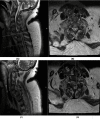
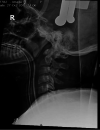

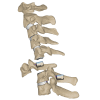
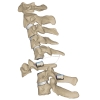
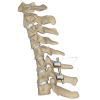
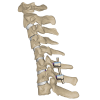

References
-
- Incidence rates and populations at risk for spinal cord injury: a regional study. Burke DA, Linden RD, Zhang YP, Maiste AC, Shields CB. Spinal Cord. 2001;39:274–278. - PubMed
-
- A novel operative approach for the treatment of old distractive flexion injuries of subaxial cervical spine. Liu P, Zhao J, Liu F, Liu M, Fan W. Spine (Phila Pa 1976) 2008;33:1459–1464. - PubMed
Publication types
LinkOut - more resources
Full Text Sources
Miscellaneous
